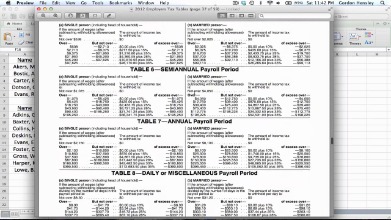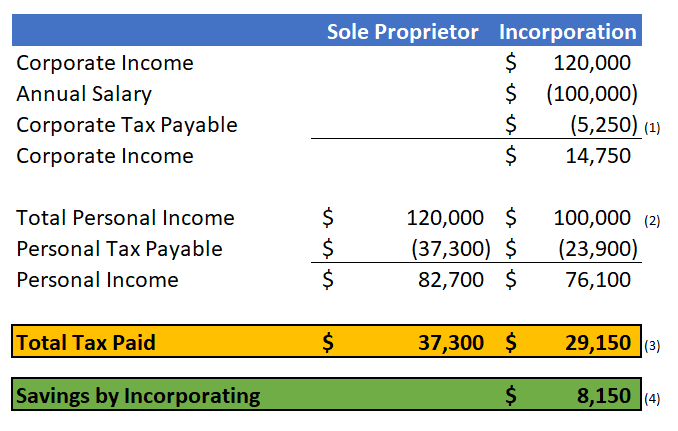
Suppose that a lender estimates $2 million of the loan balance is at risk of default, and the allowance account already has a $1 million balance. Then, the adjusting entry to bad debt expense and the increase to the allowance account is an additional $1 million. A company, ABC Co., has total accounts receivable balance of $100,000. Out of this balance, the company considers $10,000 from a specific customer, XYZ Co., to be uncollectable. Similarly, ABC Co. expects a further 10% of the remaining amount to be irrecoverable based on past experiences. Bad debts are the account receivables that have been clearly identified as uncollectible in the present or future time.

The reserve account for doubtful debts is created and maintained every year. The exact amount of the bad debts is deducted from the reserve account. Every year an anticipated amount based on historical data is credited to the reserve account. Any business entity cannot record anything as a bad debt based on personal assumptions or gut. The company will have to establish that the specific account receivable is confirmed that they could not collect. There are certain criteria set to guide the deduction or write off the receivable as bad debts.
What is a bad debt expense?
The allowance
methodestimates bad debt during a period, based on
certain computational approaches. The calculation matches bad debt
with related sales during the period. When the estimation is
recorded at the end of a period, the following entry occurs. For example, a customer takes out a $15,000 car loan on August
1, 2018 and is expected to pay the amount in full before December
1, 2018.
The amount of bad debt expense can be estimated using the accounts receivable aging method or the percentage sales method. A bad debt expense can be estimated by taking a percentage of net sales based on the company’s historical experience with bad debt. This method applies a flat percentage to the total dollar amount of sales for the period.
Balance Sheet Aging of Receivables Method for Calculating Bad
From this amount, the company can calculate the allowance for bad debts, which will be $9,000 ($90,000 x 10%). Furthermore, it can disrupt the cash management process of a company when expected cash inflows from accounts receivable fail to realize. Likewise, bad debts also increase the expenses of a company, which may result in losses for them. The percentage of sales method is an income statement approach, in which bad debt expense shows a direct relationship in percentage to the sales revenue that the company made. Likewise, the calculation of bad debt expense this way gives a better result of matching expenses with sales revenue.
- Using the percentage of sales method, they estimated that 1% of their credit sales would be uncollectible.
- In either case, bad debt represents a reduction in net income, so in many ways, bad debt has characteristics of both an expense and a loss account.
- This allowance accumulates across accounting periods and may be adjusted based on the balance in the account.
- The allowance for doubtful accounts is a contra asset account and is subtracted from Accounts Receivable to determine the Net Realizable Value of the Accounts Receivable account on the balance sheet.
- External, uncontrollable circumstances can cause people not to repay their loans or credits.
- For example,
a category might consist of accounts receivable that is 0–30 days
past due and is assigned an uncollectible percentage of 6%.
In other words, there is nothing to undo or balance as bad debt if your business uses cash-based accounting. External, uncontrollable circumstances can cause people not to repay their loans or credits. In such cases, businesses need to be prepared for the financial impact it could have on their bad debt expenses. If the actual bad debt was greater than the provision, the bad debt expense must be tracked on the income statement for the same accounting period during which the loan or credits were issued. Bad debts are an inevitable part of the business for companies that offer credit sales.
7 Appendix: Comprehensive Example of Bad Debt Estimation
Let’s say that on April 8, it was determined that Customer Robert
Craft’s account was uncollectible in the amount of $5,000. As you’ve learned, the delayed recognition of bad debt violates
GAAP, specifically the matching principle. Therefore, the direct
write-off method is not used for publicly traded company reporting;
the allowance method is used instead.
Is Norwegian Cruise Line Holdings (NYSE:NCLH) A Risky Investment? – Simply Wall St
Is Norwegian Cruise Line Holdings (NYSE:NCLH) A Risky Investment?.
Posted: Sun, 03 Sep 2023 15:02:30 GMT [source]
In general, the longer a customer prolongs their payment, the more likely they are to become a doubtful account. When your business decides to give up on an outstanding invoice, the bad debt will need to be recorded as an expense. Bad debt expenses are usually categorized as operational costs and are found on a company’s income statement. The direct write-off method is used in the U.S. for income tax purposes. However, while the direct write-off method records the exact amount of uncollectible accounts, it fails to uphold the matching principle used in accrual accounting and generally accepted accounting principles (GAAP). The matching principle requires that expenses be matched to related revenues in the same accounting period in which the revenue transaction occurs.
Though calculating bad debt expense this way looks fine, it does not conform with the matching principle of accounting. That is why unless bad debt expense is insignificant, the direct write-off method is not acceptable for financial reporting purposes. One of the biggest credit sales is to Mr. Z with a balance of $550 that has been overdue since the previous year. You may notice that all three methods use the same accounts for the adjusting entry; only the method changes the financial outcome. Also note that it is a requirement that the estimation method be disclosed in the notes of financial statements so stakeholders can make informed decisions. Allowance for Doubtful Accounts decreases (debit) and Accounts Receivable for the specific customer also decreases (credit).
Everything in 2020 changed for organizations, from AR departments having to deal with evolving work environments to low cash flow and more. For most companies, the better route is to improve their collection processes internally and implement the right procedures to reduce such occurrences. In the latter scenario, the customer might never have had the intent to pay the seller in cash.
The Balance-Sheet Approach to Estimate Bad Debt
All categories of estimated uncollectible amounts are summed to get a total estimated uncollectible balance. That total is reported in Bad Debt Expense and Allowance for Doubtful Accounts, if there is no carryover balance from a prior period. If there is a carryover balance, that must be considered before recording Bad Debt Expense. The balance sheet aging of receivables method is more complicated than the other two methods, but it tends to produce more accurate results. As the accountant for a large publicly traded food company, you are considering whether or not you need to change your bad debt estimation method.
- Based on previous experience, 1% of AR less than 30 days old will not be collectible, and 4% of AR at least 30 days old will be uncollectible.
- If the company were to maintain the income statement method, the total bad debt estimation would be $67,500 ($1,350,000 × 5%), and the following adjusting entry would occur.
- Alternatively, a bad debt expense can be estimated by taking a percentage of net sales, based on the company’s historical experience with bad debt.
- The understanding is that the couple
will make payments each month toward the principal borrowed, plus
interest. - However, the company is owed $90,000 and will still try to collect the entire $90,000 and not just the $85,200.
If there is a carryover balance, that
must be considered before recording Bad Debt Expense. The balance
sheet aging of receivables method is more complicated than the
other two methods, but it tends to produce more accurate results. The company credits the accounts receivable account on the balance sheet and debits the bad debt expense account on the income statement. Under this form of accounting, there is no “Allowance for Doubtful Accounts” section on the balance sheet.
The direct write-off method directly deducts the bad debts from account receivables. As the name implies, once bad debts have been realized, they are recorded as an expense against the revenues. Under this method, no allowance is created, and the amount directly affects the net income. For example, the debtors’ business is bankrupt due to Covid-19 and they could not effort to pay off its debt that is own to the company. Whether the company uses the percentage of sales or percentage of receivables, the estimation is usually based on past experience and the current economic condition as well as the credit policy that the company has in place.
The debtors who have become bad debts are removed from the accounts by passing an entry for bad debt expenses. Under the direct write-off method, the company calculates bad debt expense by determining a particular account to be uncollectible and directly write off such account. Unlike the allowance method, there is no estimation involved here as the company specifically choose which accounts receivable to write off and record bad debt expense immediately. Likewise, the company may record bad debt expense at any time during the period. Instead, it is an asset deducted from its accounts payable (liabilities) account. A provision is an accounting term for a company’s estimate of the money that will not be collected on receivables.
The process of strategically estimating bad debt that needs to be written off in the future is called bad debt provision. There are several ways to make the estimates, called provisions, some of which are legally required while others are strategically preferred. Make sure to research the provisioning standards that apply to your locale. Here’s how to account for doubtful and bad debt on financial statements, along with a primer on bad debt provision and why it’s important today. When you loan money to someone, there’s an inherent risk they won’t pay it back. This is called credit risk and is typically reflected in the loan’s interest rate; the higher the risk level, the higher the interest rate.
Estimating the Bad Debt Expense
Setting this amount aside enables you and your accounting team to get a better view of what is actually going on with your finances, where your assets stand, and the amount of accounts receivables you actually plan to collect. For example, if you complete a printing order for a customer, and they don’t like how it turned out, they may refuse to pay. After trying to negotiate and seek payment, this credit balance may eventually turn into a bad debt.
An alternative could be based on the debt’s age, with the older debts less likely to pay. Still, others might use a combination of a percentage plus scrutiny of its riskiest accounts. An accurate estimate of the allowance for bad debt is necessary to determine the actual value of accounts receivable. When what is form 1099 a nonperforming loan is written off, the lender receives a tax deduction from the loan value. Not only do banks get a deduction, but they are still allowed to pursue the debts and generate revenue from them. Another common option is for banks to sell off bad debts to third-party collection agencies.





